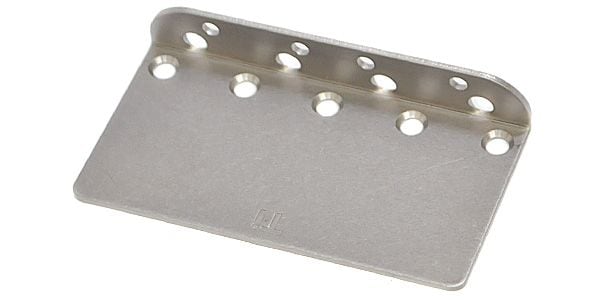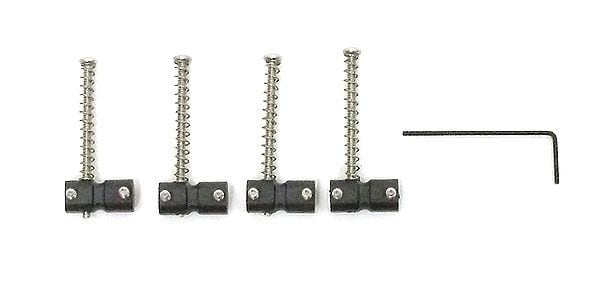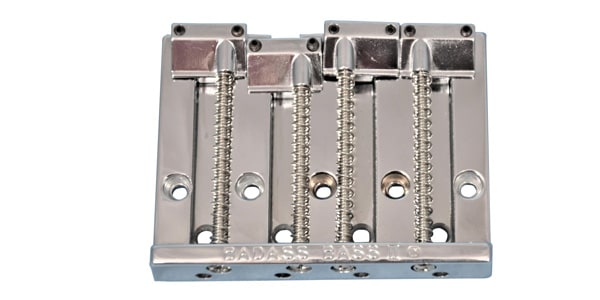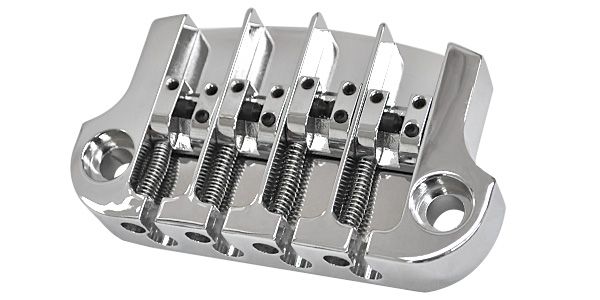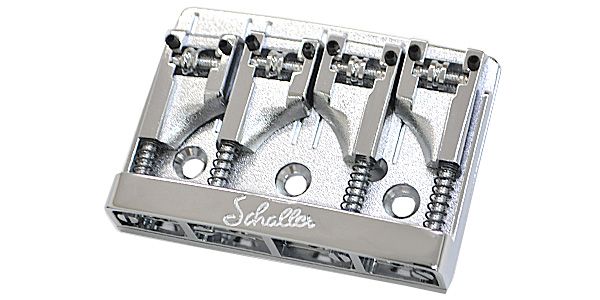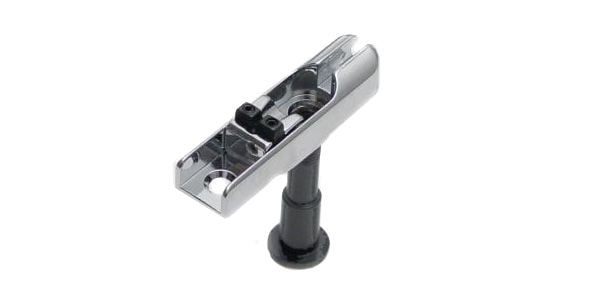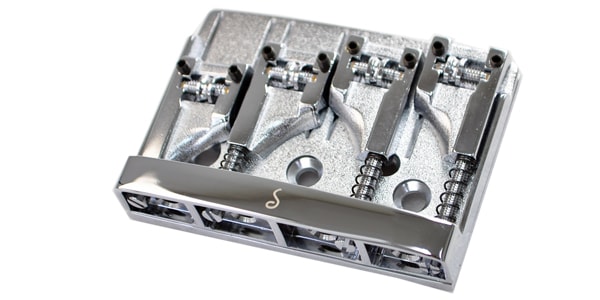Well, this time – bass bridges.
Replacing parts naturally affects the sound. If you arrange them in order of influence
PU →(preamplifier if active)→ strings → bridge → capacitor → pot → nut → joint plate → peg
In this order, I think.
In other words, the bridge is a part that affects the sound considerably. If you choose a compatible bridge, you can replace it with a single screwdriver, so even people who are not good at playing musical instruments can easily do it.
- Table of Contents -
Let's do it.
What is the role in the first place?
"Hold the strings" and "transmit the string vibration to the body and receive the vibration coming from the body".
The first function has clear symptoms such as the ease of determining octave tuning and dropped frames of strings, and if you are dissatisfied with the way the bridge is holding strings, I think that you should replace it.
However, in the case of the electric bass, it seems we are less conscious about the latter . I will mainly explain here.
Weight is important!
When changing bridges, it's safe to say that weight has the greatest impact on sound.
The heavier the bridge, the longer the sustain, the less affected the body, and the bridge, strings, and electrical equipment make the sound. On the other hand, lightweight bridges are more influenced by the body, sustain is suppressed, and the image is that the sound is created by the entire instrument.
I understand the reason for this because is "thin, light bridges are easily affected by the external (vibration is easily transmitted), and robust and heavy ones are not easily affected by the external (vibration is difficult to transmit)". Of course it depends on the material, but there will be no factor greater than weight. I think it is correct because it was derived from the experience of trying it in combination with brass, TUSQ, and titanium.
It may be natural considering the nature of being strongly influenced by the body, but if the body sounds good, a light bridge will give better sustain.
Material and function and independent types
Almost all metals such as titanium, brass (brass), and aluminum alloy are used. There are also TUSQ (artificial ivory) saddles and carbon bridge plates. There are also wooden bridges, which are not commercially available.
The sound changes depending on the combination of the bass top and the bridge plate, so it's a good idea to consider that as well. I think it's a good idea to replace only the frames and feel the changes depending on the material.
On the functional side, if the tuning accuracy isn't too bad, you shouldn't worry about it. I don't think there is any problem with the bridges handled by Sound House (if it corrodes (rusts, etc.), there will be various problems, so consider cleaning or replacing your bridge).
Cheap bridges, especially spiral saddles, are prone to dropped frames and string misalignment. Countermeasures include replacing tops and using tapered strings or exposed core strings.
Finally, let's talk about the stand-alone type of bridges that have become quite popular these days. Since the pieces are not connected by the bridge plate, there is the advantage that vibration is not easily transmitted to the adjacent string (cosine mute is easy). You can also adjust the pitch between strings to your liking. It is impossible for a general bridge to make the distance between strings less than 17 mm, so if you want to play chords, you may want to change to a stand-alone type.
However, you may need to make new screw holes or modifications, so if you are not confident, you should ask an instrument store to install it.
Recommended bridges
First of all, the Fender system
I like the set of KTS WB-1 and GRAPHTECH PS-8304-00. I’m thinking of getting TUSQ saddles later.
KTS / WB-1 Titanium Bridge Plate for Bass
GRAPHTECH / PS-8304-00
In addition, the resurrected Badass Bass 2 is has been released by ALLPARTS LEO QUAN BADASS II Chrome BB-0335-010. Speaking of heavy bridges, Badass. It was very popular about 15 years ago.
ALLPARTS / LEO QUAN BADASS II Chrome BB-0335-010
I also like the Fender Hi-Mass Bridge.
Next, Thunderbird.
The safest is HIP SHOT's 3 Point Super Tone. It can be installed without modification or adjustment. Currently, I have the SCHALLER 3-D4 installed. This installation may be a little troublesome.
HIP SHOT / 3 Point Super Tone Bass Bridge Chrome
SCHALLER / 3-D4 CHROME
HIP SHOT Triple-Lock Down for stand-alone type. It also came installed on my 8-string fretless. It supports both top load and back load and is highly versatile.
HIP SHOT / Triple-Lock Down Chrome
Finally, let's talk about the manufacturer roughly
● BABICZ
The FCH is a bridge that improves sustain from the top plate, and is my recommendation.
● GOTOH
They make only standard products. Cheap and highly accurate. Versatility praised all over the world.
● Freedom Custom Guitar Research
A manufacturer that makes ambitious products based on standard products. The tone shift bridge series is good. It's cheap if you get just the top.
● HIP SHOT
It features modern products such as tremolo units and the D style (a bridge with a separate bridge and tailpiece like the Tune-O-Matic).
● KTS
They use titanium. The high-frequency component is slightly suppressed, but the sound is a little tall and clear.
● Ray Ross
Exciting Anyway, I'm excited.
There are other manufacturers, but I have narrowed them down to the above.
What did you think?
I look forward to helping you. Thank you for reading to the end.





